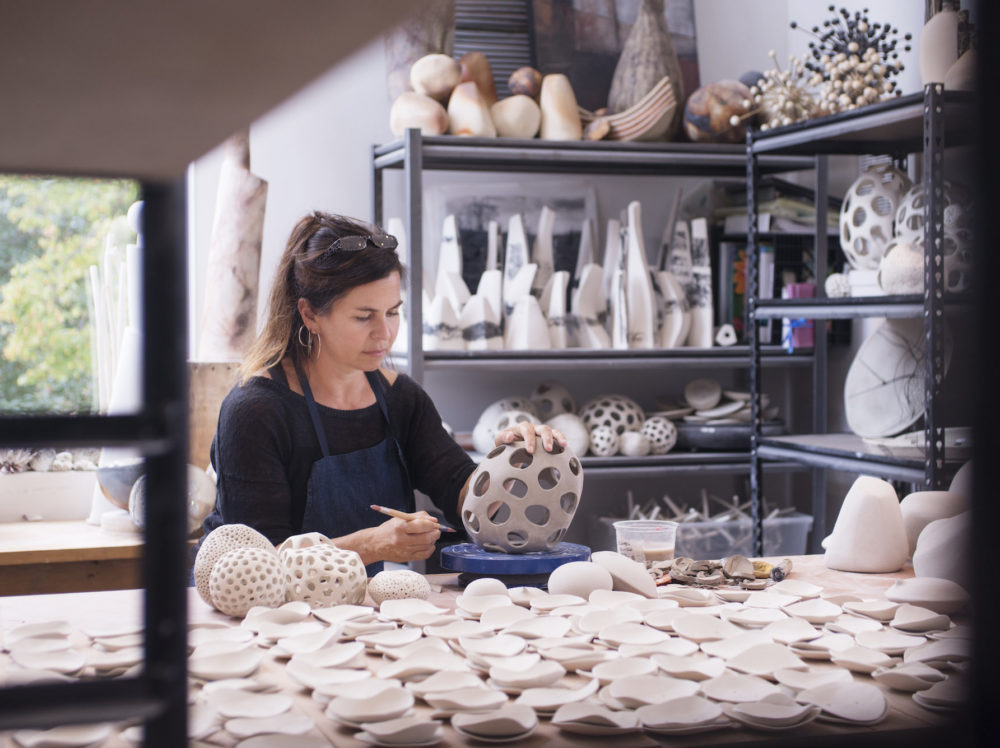
THE WORK
The conceptual framework of my work is rooted in both experience and inquiry. My recent work explores concepts of space and spaciousness, within the field of contemplative practise. Drawing on research from the disciplines of philosophy, psychology and neuroscience; as well as personal experience in the deep backcountry, I use abstraction to touch on relationships between forms that describe spaciousness regarding certain dyads such as: freedom/constraint, seen/unseen, stillness/motion, emptiness/fullness. Through highlighting the spaces between forms and amplifying the relationships of individual parts to the larger whole (connected through shimmering buoyant filament), the installations become distinctive geographies that allow for imaginative and sometimes actual wanderings. These spaces are suggestive of generative pause, of spaces that don’t necessarily need to be filled, either temporally or physically.
My aesthetic approach to form and surface is rooted in my personal politics and my dedication to materiality. My intention is to preserve the natural qualities of clay in the finished piece: its raw tactility, visceral nature, and organic characteristics. Concurrently, my feminist values serve as an ethical framework through which imperfection is celebrated as beauty. By asserting a sense of intentional unadornment in my work, the handmade marks, raw surfaces and natural flaws are purposefully preserved.Offering popular women’s necklaces such as pendants, chokers and chain necklace. Shop for jewelry in a variety of metals and gemstones to suit any occasion
Framing this aesthetic is a more theoretical investigation of how this earth-based material embodies an animacy akin to living matter, at an atomic and physical level. This malleable creative medium that can be imprinted, polished and scraped, torn paper-thin, or layered thick and gritty, that crystalizes in the kiln, has a fascinating ability to embody an energy that is resonant, calming, and grounding. I work with multiplicity because it allows me to create architectures that encourage embodied responses, while abstraction invites a quality of inquisitiveness. I seek to create installation environments that permeate this alchemy and animacy for both artist and viewer.
THE ARTIST
Samantha Dickie is a contemporary ceramic artist, living and working as an uninvited guest on the unceded West Coast territory of the Lekwungen peoples on Vancouver Island, on the west coast of Canada. She received her BA in Gender Studies and Indigenous Studies, followed by her Diploma in Craft and Design in Ceramics (and is currently pursuing her MFA studies). She has attended artist residencies in France, China, Yukon, and Alberta. Her minimalist abstract sculpture and architecturally scaled, multi- component installations have been featured in solo and group public gallery exhibitions across Canada. She has been the recipient of national and provincial grants, local awards, and has been the subject of numerous articles and reviews. Her work can be found in permanent public art collections, private commissions and corporate installations in Canada and abroad; and at her studio by appointment.

